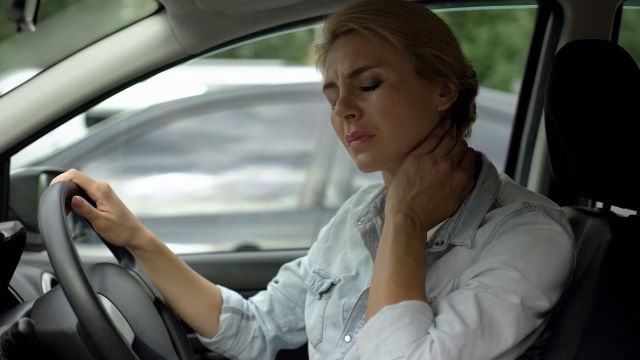Discomfort and lower back pain are frequent complaints reported by many drivers, this is why road safety organization GEM Motoring Assist is giving some simple solutions that can make a big difference for comfort and safety.
The organisation has compiled a line-up of tips to help drivers and passengers enjoy more comfortable journeys. These are based on the process of ageing and how it can affect our ability to get in and out of the car or drive around safely and in comfort.
GEM chief executive Neil Worth comments: “Driving forces us to sit in a constrained posture, sometimes for long periods of time. This can often lead to stiffness and reduced mobility, especially among older drivers. Common complaints include lower back pain, stiff neck, foot cramps, sore shoulders and finger cramp. We want drivers to adopt an approach that says: ‘being in pain at the wheel is not normal and is not something I need to put up with’.
“Our tips offer some great ideas that should help you reduce – and hopefully eliminate – any pains or discomfort while driving.
“We look at whether your car is as suitable for your needs and circumstances as it once was. We demonstrate inexpensive but safe devices that can reduce the discomfort associated with getting in and out, loading heavy luggage, turning your neck or fastening your seatbelt.
“We want to help every driver stay as safe as possible for as long as possible. All our tips are designed to make it easy for drivers to adapt to the sort of physical changes that happen to most of us, whilst ensuring that we are always in full control of our vehicle on every journey.”
GEM’s tips for safer, more comfortable car journeys:
1 Getting in and out
If you find it difficult to get into or out of a car, consider getting something extra to hold on to. The steering wheel can offer a bit of extra leverage, but it’s not recommended because you could do long term damage to it. There’s a range of handles and large grips that go into the car door latch and create a strong handle. This improves stability and safety.
2 Loading and unloading
Many drivers find it challenging to stow luggage and heavy equipment. For example, putting a wheelchair in the boot can be a risky undertaking based on its sheer weight. There are simple ways to make boot access easier. Use simple laminated boards, as they can reduce the strain of lifting. And think about putting some sort of protective cover at the boot opening, so you don’t risk damaging your car’s paint and bodywork if you’re struggling with a heavy item of luggage.
3 Seat belt
If it’s uncomfortable reaching back to grab your seat belt, that’s no excuse to stop wearing it. Easy-reach seatbelt handles are cheap to buy and quick to fit. Also consider extra padding if you need it. Sheepskin seatbelt covers protect your neck and shoulder from rubbing and chafing.
4 Driving position
Sitting too close to the wheel is a bad idea, as this could compromise the effective deployment of safety devices such as air bags in the event of an emergency. Sitting too far back compromises pedal control. So, make sure your feet have free and effective contact with the pedals. Experts recommend a minimum of 30cm gap between the centre of the steering wheel and the base of the driver’s breastbone.
5 Reduce glare
As the days shorten, we’re entering the time of year where glare from low sun can seriously compromise visibility. But you can take steps to reduce the harmful effects of glare. Ask a professional about the most suitable sunglasses for your needs and consider additional glare shields which you can fit to the sun visor.
6 Plan your journeys
Take the time to plan any long journeys or trips on unfamiliar roads. Plan to travel when traffic is light and stick to the types of roads that suit you best. Consider postponing the journey if weather conditions are poor. If you find turning your neck difficult, then avoid junctions where you know it’s painful.
Click here to visit our home page

